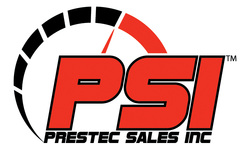Seals or Cups solution(s) from Cat Pumps®

Scored Plungers The ceramic plungers offer an extremely durable wear surface, however, harsh chemicals, extremely hard water, excessive abrasives in the liquid and running dry can score the plunger surface. Operating the pump with excessive wear to the Lo-Pressure and Hi-Pressure seals, will allow the Male Adapter to come in contact with the ceramic plunger and score it. Incorporate a more frequent service cycle. Replace the plungers and install a new seal kit. Plungers are sold separately.
Scored Cylinders or Sleeves Scored Cylinders generally occur when the cups wear and the pump continues to operate. The piston begins to wear onto the cylinder surface. Sleeves score when the inlet seals wear. Both cups and seals should be replaced at the first signs of low pressure. Carefully examine the interior wall of the cylinder each time the cups are replaced. Carefully examine the outer surface of the sleeves at the end of the piston rod each time the seals are replaced. Any roughness or grooves will prematurely wear the cups or seals. Replace the Cylinders or sleeves as needed. Sleeves are included in the Sleeve and Seal Kits. Cylinders are less likely to become pitted or scored and are sold separately.
Excessive Inlet Pressures Maximum inlet pressure for the piston pumps is 40PSI and plunger pumps is 60-70PSI. The Cat® special "K" Block-Style pumps have a special manifold that permits high inlet pressures equivalent to the discharge pressures. If your supply line pressure exceeds the pump inlet rating, install a pressure reducing valve at the pump inlet.
Excessive heat Make certain liquid temperature is within pump range. If returning the by-pass back to the pump inlet, install a Thermo Valve in the by-pass line. If the system is in prolonged by-pass or more than 50% of the total capacity is being by-passed, consider installing dual pumps with the second pump coming on with increased demand. Enlarge supply tank to accommodate high by-pass and allow liquid to cool before returning to the pump.
Pump Run Dry Starvation means you are not getting enough liquid into the pump inlet. Starvation is typically caused by restricted inlet lines, excessive demands on supply line, kinked hoses, excessively dirty inlet filters, low or empty supply tank, excessively long feed lines or air bubbles in the liquid. All of these conditions will severely and prematurely wear the seals. If the situation gets too severe, the valves will also show pitting. Determine the cause and correct. Then install a new seal kit or valve kit as needed.
Seals Installed Incorrectly Always note the order and direction of parts when removing them from the pump to assist in installing the new items. If installed backwards, seals will not hold pressure. PLUNGER PUMPS: always keep the "V" groove or the "Spring" side of the seals or packings towards the liquid or high pressure side. PISTON PUMPS: always keep the NBR or FPM Cups side of the piston assembly towards the liquid or high pressure side.
Scored Cylinders or Sleeves Scored Cylinders generally occur when the cups wear and the pump continues to operate. The piston begins to wear onto the cylinder surface. Sleeves score when the inlet seals wear. Both cups and seals should be replaced at the first signs of low pressure. Carefully examine the interior wall of the cylinder each time the cups are replaced. Carefully examine the outer surface of the sleeves at the end of the piston rod each time the seals are replaced. Any roughness or grooves will prematurely wear the cups or seals. Replace the Cylinders or sleeves as needed. Sleeves are included in the Sleeve and Seal Kits. Cylinders are less likely to become pitted or scored and are sold separately.
Excessive Inlet Pressures Maximum inlet pressure for the piston pumps is 40PSI and plunger pumps is 60-70PSI. The Cat® special "K" Block-Style pumps have a special manifold that permits high inlet pressures equivalent to the discharge pressures. If your supply line pressure exceeds the pump inlet rating, install a pressure reducing valve at the pump inlet.
Excessive heat Make certain liquid temperature is within pump range. If returning the by-pass back to the pump inlet, install a Thermo Valve in the by-pass line. If the system is in prolonged by-pass or more than 50% of the total capacity is being by-passed, consider installing dual pumps with the second pump coming on with increased demand. Enlarge supply tank to accommodate high by-pass and allow liquid to cool before returning to the pump.
Pump Run Dry Starvation means you are not getting enough liquid into the pump inlet. Starvation is typically caused by restricted inlet lines, excessive demands on supply line, kinked hoses, excessively dirty inlet filters, low or empty supply tank, excessively long feed lines or air bubbles in the liquid. All of these conditions will severely and prematurely wear the seals. If the situation gets too severe, the valves will also show pitting. Determine the cause and correct. Then install a new seal kit or valve kit as needed.
Seals Installed Incorrectly Always note the order and direction of parts when removing them from the pump to assist in installing the new items. If installed backwards, seals will not hold pressure. PLUNGER PUMPS: always keep the "V" groove or the "Spring" side of the seals or packings towards the liquid or high pressure side. PISTON PUMPS: always keep the NBR or FPM Cups side of the piston assembly towards the liquid or high pressure side.
